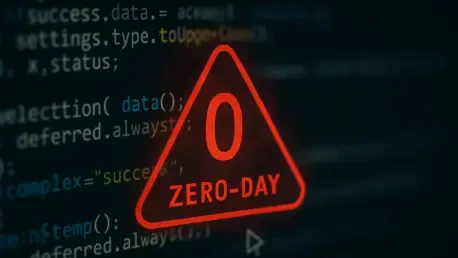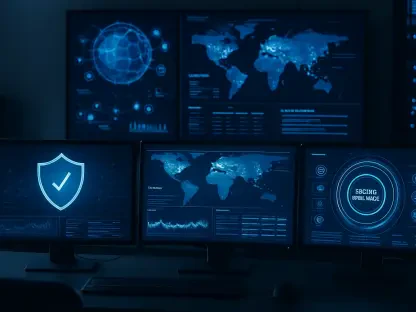In recent months, the cyber world has been grappling with a significant issue that poses serious threats to businesses worldwide. A critical zero-day vulnerability in CrushFTP servers, identified as CVE-2025-54309, has become a target for exploitation by aggressive threat actors across the globe. Originally detected on July 18, 2025, this flaw arises from a previously patched weakness in the CrushFTP software, which is now being aggressively exploited due to its outdated presence in many systems. The vulnerability specifically affects CrushFTP Version 10 installations before 10.8.5 and Version 11 iterations that lack updates beyond 11.3.4_23—datelines which mark their prevalence before July 1, 2025. With its mechanism of attack rooted in compromised HTTP and HTTPS protocols, this issue stands as a stark reminder of the necessity for vigilance and robust security practices. As such, ensuring system integrity and defending against unauthorized access becomes a mandate organizations cannot afford to neglect.
The Scope of the Exploitation
The advancement of attack vectors utilizing the CrushFTP zero-day vulnerability has catalyzed widespread alarm in cybersecurity circles. Notably, the vulnerability engenders critical risks for internet-facing servers, a situation that beckons immediate attention and action from affected organizations. While the enterprise customers of CrushFTP employing a DMZ configuration remain unaffected, indicating the value of network segmentation, servers lacking such precautions find themselves at severe risk. The exploitation takes advantage of the servers through unauthorized alterations to files like the MainUsers/default/user.XML file. These changes may include tampering with “last login” entries and adjustment of modification timestamps, all of which contribute to heightening the danger. Additionally, hackers often render administrative access to default users, create arbitrary user IDs, and manipulate version displays, further signifying an initiative fraught with perilous potential.
Understanding the breadth of this vulnerability, businesses become cognizant that these manipulations are not merely breaches of system protocols, but they also signal a deeper, more persistent threat to their operational sanctity. As criminals achieve these systemic infiltrations, they prove the extent of the exploitation routes available through this specific software flaw. This is a wake-up call for organizations that have yet to institute adequate protective measures, stressing the importance of keeping software updated and investing in layered security defenses.
Remediation and Protective Measures
In confronting the vulnerabilities laid bare by the CrushFTP zero-day, it is evident that prompt remediation strategies are integral. As deployed by those knowledgeable in cybersecurity practices, adopting a multi-pronged approach helps curb the impact and prevent further exploitation. Central to this effort is ensuring all CrushFTP software versions are updated to the latest releases. This essential step not only blocks the known exploitation routes but also safeguards against emerging methods devised by persistent attackers. Recommendations put forth by CrushFTP emphasize the necessity of utilizing their validation hash function as a mechanism for maintaining software integrity. Furthermore, implementing IP whitelisting restricts unauthorized access, creating an additional barrier against intrusion attempts.
Beyond immediate technical interventions, the adoption of regular backup procedures stands as a staple requirement. Not only does this strategy cushion organizations from data loss, it reinforces their resilience amidst disrupted operations should an attack succeed. The overarching lesson to be gleaned through this episode is the undeniable relevance of keeping all digital infrastructures updated. By doing so, organizations better equip themselves to fend off sophisticated cyber threats that continue to evolve alongside technological developments. As stakeholders in cybersecurity combat these persistent risks, their strategic preparedness is indispensable in securing a fortified posture against potential exploitations.
Looking Ahead: Strategic Safeguards
The recent exploitation of the CrushFTP zero-day vulnerability has caused significant concern within cybersecurity communities. This specific vulnerability poses serious dangers to servers exposed to the internet, emphasizing the urgent need for organizations to address these threats. While CrushFTP clients with DMZ configurations seem less impacted, highlighting the benefits of network segmentation, other servers lacking such measures face considerable risk. Hackers exploit these vulnerable servers by making unauthorized changes to crucial files like the MainUsers/default/user.XML. These alterations might involve tampering with “last login” records and modifying timestamps, which intensifies the risk. Moreover, attackers often grant unauthorized administrative access to default users, create arbitrary user IDs, and manipulate version information, revealing the alarming potential of their endeavors. Recognizing the extent of this vulnerability, it is evident that these breaches threaten not just system operations but also broader organizational security. Organizations are reminded of the necessity to keep software current and to incorporate layered security defenses, thereby reinforcing their protective stance against such systemic intrusions.









